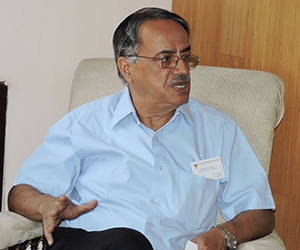The month of September 2016 commences with a number of important summits. The first would be the G-20 summit, followed by a series of ASEAN related summits including the 11th East Asia Summit and 14th ASEAN-India Summit. While the G-20 summit is scheduled be held in Hangzhou in Eastern China from 04 to 05 September 2016, the ASEAN related summits would take place at Vientiane, Laos, from 06 to 08 September. Both summits, however, come after a momentous ruling given by the Permanent Court of Arbitration (PCA) on the dispute between the Philippines and China on the South China Sea (SCS). It is likely that the PCA Award and the matter of adherence to international norms could become one subject matter of discussions during these summits even while China would like to avoid any reference to the issue.
Prime Minister Narendra Modi will be attending G-20, ASEAN-India and East Asia Summits. Prior to that he would be visiting Vietnam. Though this might be a first visit by an Indian Prime Minister to Vietnam in 15 years, India’s top political and military leadership has been engaging with that friendly country regularly in order to strengthen political, economic, defence and security relationships. While in Vietnam, Prime Minister Modi will be received as a ‘dear friend’, as indeed he is viewed by his hosts. The visit to Vietnam prior to the G-20 summit will send a few political signals to China.
First of all, it would substantiate the Indian Government’s engagement in providing substantive strategic support to Vietnam in building the latter’s military and non-military capabilities. There is also a view that though the current level of India-Vietnam cooperation is quite satisfactory, there remains much left to be done to harness the potentials of strengthening economic, cultural and civilization links, besides forging a robust defence and security relationship. All these aspects of bilateral relationship could see further progress during PM Modi’s visit to Vietnam. For instance, in so far as defense cooperation is concerned, the new emphasis on ‘Make in India’ as well as clearance of cent percent FDI in defence sector would impact India’s defence exports policy, thus opening up of the options of India supplying missile and other modern defence hardware to Vietnam. Joint training exercises and cooperation in training defence personnel is also likely to be stepped up.
In May 2015, during the Vietnamese Defence Minister’s visit to New Delhi, both sides had signed a ‘Joint Vision Statement for Defence Cooperation’ for the period 2015-2020. That time the PM had stated that India was fully committed to enhance defence and strategic relationship with Vietnam. His forthcoming visit would therefore be expected to further deepen the bilateral defence and security ties in innovative ways. In June 2016, during India’s Defence Minister Manohar Parrikar’s visit to Vietnam, the Vietnamese Border Guards had handed over the bid document to M/S Larsen and Toubro for the purchase of fast interceptor crafts to boost their coastal and maritime security. The contract could be signed during the PM’s visit.
Secondly, both countries share a common perspective on the emerging strategic and security environment in the region. The visit, therefore, is very timely as it comes after the PCA Award on the dispute between the Philippines and China over the South China Sea which though settled in favour of Manila, has a universal application. With both the countries growing at very good rates of annual growth while sharing many complementarities in their economies, the visit would help strengthen mutual understanding to a new level.
Thirdly, PM Modi feels that Vietnam plays a key role in India’s realization of its ‘Act East’ policy. Strengthening of bilateral economic and strategic relationship would therefore facilitate the fructification of that policy. The visit would also be significant in the multi-lateral context, whereas Vietnam is a part of the ‘Mekong-Ganga Cooperation Initiative’ which is a sub-regional grouping designed for improving connectivity in a variety of ways between India, Myanmar, Thailand, Laos, Cambodia and Vietnam. Hanoi has been instrumental in supporting India’s efforts at ASEAN-India meetings and has also been cooperating with her at multilateral forums of East Asia Summit (EAS), Asian Regional Forum (ARF) and ASEAN Defence Ministers’ Meeting (ADMM) Plus, thus furthering the objectives of India’s Act East policy. Indeed, Vietnam’s nomination as the country-coordinator for India in her engagement with the ASEAN from 2015 to 2018 underscores Vietnam’s salience in India’s multifaceted relationship with the ASEAN.
Fourthly, India is inclined towards cooperative efforts with the United States, Japan, Vietnam, Australia and ASEAN countries as well as other powers to ensure that peace, security and stability is maintained in the Asia-Pacific region. India looks to achieve this end without being confrontationist in its dealings with China. At the EAS at Vientiane, PM Modi is expected to reiterate India’s consistent stance on the SCS and extend her support to finding peaceful solutions to the prevailing confrontations in the region.
As for as ASEAN summit is concerned, while its leaders would strive to present a unified stand on the SCS, China would do her utmost to prevent a consensus emerging among the ASEAN members, as indeed has been her practice in the past. Indeed, strengthening the centrality, unity and solidarity of ASEAN has always been a challenge, especially when it comes to forging a united front on the issue of the SCS. While ASEAN members, especially those that are at the receiving end of China’s assertive policies, would like China to deal with the issue on multi-lateral basis, China is more inclined to deal with it on bilateral basis. Notably, Laos, which is hosting a multitude of ASEAN related summits, is identified more with the Chinese camp while Cambodia has been known to favour China in the past. Therefore, the other ASEAN leaders have to work hard on impressing the outlier members on the value and worth of forging unified approach in dealing with an aggressive and irredentist rising power whose uncertain behaviour and flouting of international norms could heighten the risks of unintended hot conflict.
At the last ASEAN-India Summit held in Kuala Lumpur in November 2015, the ASEAN Leaders had welcomed India’s ‘Act East’ and ‘Make in India’ policies and had viewed such initiatives as complimentary to ASEAN’s community building efforts. India and the ASEAN have underlined their commitment to work together in realizing the vision and goals outlined in the ‘ASEAN 2025: Forging Ahead Together’ document. A ‘Plan of Action’ (POA) to implement the ASEAN-India ‘Partnership for Peace, Progress and Shared Prosperity’ (2016-2020) was also adopted by the leaders of ASEAN and India last year. The POA 2016-2020 comprises three broad areas of cooperation, namely, political and security, economic and socio-cultural cooperation. A review of actions for implementation of that POA is expected to be undertaken during the forthcoming summit. ASEAN has been supportive of India’s initiatives like ‘Mekong-Ganga Cooperation’ and Bengal Initiative for ‘Multi-Sectoral Technical and Economic Cooperation’ (BIMSTEC), which promote connectivity, enhance regional dialogue and accelerate regional integration; nurture of that understanding would be an important agenda for Indian diplomacy.
While ASEAN-India Free Trade Agreement (FTA) in goods has shown some incremental progress, the trade volumes remain quite low as compared to that with India-China trade. Similarly, while India hoped to address some imbalances in its economic relationship with the ASEAN through FTA in services sector, that has not turned out the way India had envisioned. However, in the sphere of defence and security relations, India has burgeoning bilateral ties with almost all the nations of the ASEAN.
At the strategic level, ASEAN countries see India as a benign power. This view could contribute positively to the emerging strategic equations in the region and that indeed is a strong platform for India to work from.
Published Date: 2nd September 2016, Image Source: http://www.alamy.com
(Disclaimer: The views and opinions expressed in this article are those of the author and do not necessarily reflect the official policy or position of the Vivekananda International Foundation)











Post new comment